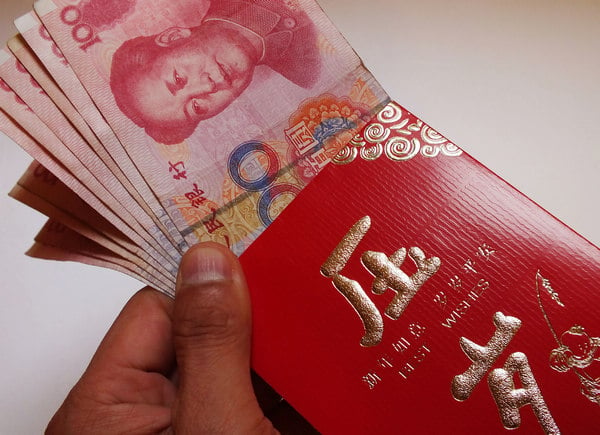Chinese New Year can be referred to as 农历新年 (nóng lì xīn nián) or "Agricultural New Year", or more commonly 春节 (chūn jié) or "Spring Festival." It’s bigger than Mardi Gras. It’s bigger than the 9.3 billion-dollar Chinese holiday, Singles Day. It’s even bigger than Christmas in the U.S.
Because instead of presents, you get money.
Yes, you read that right.
红包 (hóng bāo), literally “Red Envelopes,” are ostentatiously decorated envelopes filled with money, often presented to children or single relatives by married couples. The amount inside can vary, but many may choose to incorporate the lucky number 8. For example, 288 yuan. Amounts never contain the number 4 due to the phonetic similarity of the word to 死, or “to die.”

Related: Lucky and Unlucky Numbers in China
拜年 (bài nián) is the term “to wish [someone] a happy new year.” Many younger children will be taught to “磕头 (kē tóu) ”, or bow before elders as a sign of respect. 磕头 specifically refers to “touching the head,” which means the children will often touch their forehead to the ground in front of their elders. After doing so, they may receive their 红包.
 A child demonstrating "磕头" for a red envelope.
A child demonstrating "磕头" for a red envelope.
Chinese New Year is about more than receiving “红包”, however. This 5,000-year-old celebration is a time for families to reunite, eat, drink and make merry. Common traditions include setting firecrackers and hanging red decorations.
These traditions have their roots in mythology. It was believed that “Nian” (the word for Year) was a giant monster that would devour livestock, crops and even children. The villagers soon learned that Nian was afraid of the color red, and of loud noises. To protect themselves, they hung red paper cutouts on the houses and lit firecrackers to scare it away.
Check out some of the current traditions below: